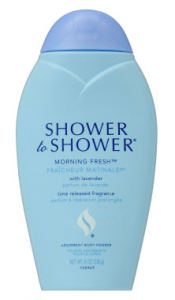Possibility That Product Contained Asbestos Not Enough to Create Triable Issue in California
By Angela Hampton, San Diego on December 20, 2019
 Recently, in Berg v. Colgate, the Court of Appeal gave good news to manufacturers who dispute that their products contain asbestos. “It was not enough for plaintiffs to produce some evidence that [plaintiff] was exposed to a product that possibly contained asbestos.” Plaintiffs’ case against Colgate was dismissed when plaintiffs failed to provide sufficient evidence that plaintiff “was more likely than not exposed to asbestos contained in a product sold by Mennen.”
Recently, in Berg v. Colgate, the Court of Appeal gave good news to manufacturers who dispute that their products contain asbestos. “It was not enough for plaintiffs to produce some evidence that [plaintiff] was exposed to a product that possibly contained asbestos.” Plaintiffs’ case against Colgate was dismissed when plaintiffs failed to provide sufficient evidence that plaintiff “was more likely than not exposed to asbestos contained in a product sold by Mennen.”
Colgate-Palmolive Company’s predecessor, the Mennen Company, manufactured a shave talc that plaintiff used from 1959 to 1962. Colgate adamantly disputes that the product contained asbestos. Further, Colgate argued plaintiff could not establish through reliable evidence that the talc plaintiff actually used contained asbestos.
Plaintiffs argued that all or virtually all of the Mennen talc that plaintiff used from 1959-1962 contained asbestos. First, plaintiffs put forth evidence that Mennen’s talc supply came from mines historically known (aka assumed) to be contaminated with asbestos. Next, they submitted a 1972 FDA test showing that Mennen talc contained 4% chrysotile asbestos and a 1976 test showing that Mennen talc manufactured in 1972 contained 2% tremolite asbestos. Last, plaintiffs’ expert tested Mennen talc samples which looked similar to the description of the cans plaintiff used. Plaintiffs’ expert alleged that the samples contained amphibole asbestos. From the combined evidence, plaintiffs’ expert opined to a reasonable degree of scientific certainty that the cans plaintiff used from 1959-1962 contained dangerous levels of asbestos.
The Court of Appeal was not convinced that a jury could conclude from plaintiffs’ evidence that it was more likely than not that the shave talc plaintiff used contained asbestos. Even assuming that some talc came from mines that contained some level of asbestos, plaintiffs “fail[ed] to a support a conclusion that all or most of the Mennen Shave Talc containers sold from 1959 to 1962 contained asbestos.” Notably, plaintiffs’ expert relied upon the FDA’s testing of cans that were manufactured at least 10 years after the time plaintiff used the product. What’s more, the testing plaintiffs’ expert personally conducted were on cans of an unknown origin date. Plaintiff’s testimony that the cans tested looked similar to the cans he used decades prior is insufficient.
Plaintiffs primarily relied on Lyons, where the court found “substantial evidence creating a triable issue as to whether Colgate’s Cashmere Bouquet talc contained asbestos that may be found to have been a substantial cause of plaintiff’s mesothelioma.” The Court of Appeal disagreed, distinguishing Lyons on several grounds. In Lyons, plaintiff used the product for over 20 years. Additionally, Colgate did not dispute that the product contained asbestos and there was no evidence of any other source of asbestos exposure. Taken together, this was enough evidence to “create more than an unsupported possibility” that the product exposed plaintiff to asbestos.
Here, unlike Lyons, plaintiffs’ expert was unable to explain rationally “or even commonsensically logical” how he determined Mennen cans sold during the applicable time contained asbestos. Unlike Lyons, plaintiffs allege additional exposure to asbestos from other products. A final, distinguishing factor was that plaintiff used Mennen shave talc for a short period of time, 1959-1962, and only between 4-6 cans during that period. “Thus, [plaintiff’s] eventual development of mesothelioma provides much weaker support for an inference that the shave talc he used contained asbestos.”
Ultimately, the Court of Appeal held that plaintiffs failed to carry their evidentiary burden. “At best, plaintiffs presented evidence that the shave talc [plaintiff] used exposed him to asbestos, but they failed to present evidence upon which a reasonable jury could conclude that any such exposure was more likely than not.” This case will provide helpful legal precedent to ensure that plaintiffs satisfy their evidentiary burden to demonstrate the product was more likely than not to contain asbestos.
If you are planning to disturb materials that might contain asbestos, hiring asbestos monitoring sydney services can help assess the airborne asbestos levels and ensure that proper safety measures are in place during any activities that could release asbestos fibers into the air.

 When a Los Angeles jury returned an eye-popping $416 million verdict for plaintiff in a closely-watched talcum powder ovarian cancer case in 2017, the world took notice. The trial court granted post-trial motions that dramatically changed the jury’s verdict. Recently, in
When a Los Angeles jury returned an eye-popping $416 million verdict for plaintiff in a closely-watched talcum powder ovarian cancer case in 2017, the world took notice. The trial court granted post-trial motions that dramatically changed the jury’s verdict. Recently, in